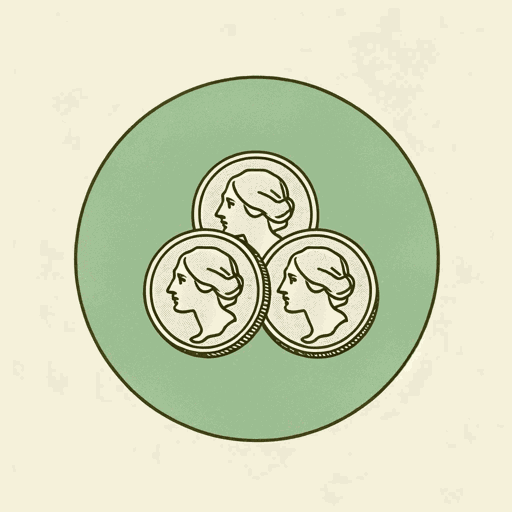77 pages • 2 hours read
Virginia WoolfOrlando
Fiction | Novel | Adult | Published in 1928A modern alternative to SparkNotes and CliffsNotes, SuperSummary offers high-quality Study Guides with detailed chapter summaries and analysis of major themes, characters, and more. For select classroom titles, we also provide Teaching Guides with discussion and quiz questions to prompt student engagement.
Summary and Study Guide
Overview
Orlando: A Biography is a novel published in 1928 by the English author Virginia Woolf. It tells the story of Orlando, a member of the English nobility who is born a male in 16th century England. Around the age of 30, Orlando mysteriously changes into a woman and lives for centuries without visibly aging. Author Jeanette Winterson called Orlando “the first trans novel in English.” (Winterson, Jeanette. “’Different sex. Same person’: How Woolf’s Orlando became a trans triumph.” The Guardian. 3 Sep. 2018.) The book is widely regarded as one of Woolf’s most popular and critically acclaimed works. Although its subtitle suggests that the book will be nonfiction, it instead tells the surreal coming of age story of the fictional Orlando, satirizing the biographical genre in English literature. Woolf used the form of the biography to criticize the pursuit of objective fact, arguing that creativity and imaginative language can better capture the truth of someone. It also calls into question constructs of gender identity.
The title character is based on Woolf’s lover and friend, Vita Sackville-West. Sackville-West was a successful novelist, poet, and journalist. She published more than a dozen collections of poetry and 13 novels during her lifetime. Vita shares many biographical details with Orlando. Orlando’s noble legacy and extended family mirror Sackville-West. Like Orlando’s own family estate, Sackville-West had a family home called the Knole, though Vita Sackville-West was unable to inherit it due to her gender.
The novel has been adapted for film and theater. Among them is the 1992 film version starring Tilda Swinton as Orlando and 1998 theatrical adaptation by Sarah Ruhl that played Off-Broadway in 2010
This guide uses the 2006 annotated edition by Maria DiBattista. The book does contain some terms now described as racial slurs. There are two instances of the n-word and the use of the archaic term Moor. The book makes frequent use of the term “gyipsy.” Outside of direct quotations, this term has been replaced with the term Romani. To describe the genders of characters, this guide uses the gender the character is identified with during that moment. When talking more broadly, the guide uses they/them. For the ungendered biographer, the term they/them is used.
Plot Summary
The novel tells the story of Orlando from the age of 16 in 16th century England until the age of 36 in 1928. The novel is narrated by an unnamed biographer who expresses their opinions about the story's events, despite their claims to only report facts.
In his teens, Orlando is a page in Queen Elizabeth I’s court. She dotes on him, considering him her “favorite,” but their relationship dissolves after Elizabeth sees him kiss a young girl. Amid a period of historically low temperatures known as the Great Frost, Orlando falls in love with a Russian princess named Sasha. However, Sasha is unfaithful to him and departs to Russia after the Frost ends.
Shortly thereafter, Orlando attempts a career as a poet, returning to a piece called “The Oak Tree” which he abandoned many years before. He befriends the poet Nicholas Greene in the hopes that Greene will help his literary career. However, Greene betrays Orlando by parodying him in one of his works.
In the 17th century, King Charles II appoints Orlando to be an ambassador in Constantinople. Following a night of widespread violence and civil unrest in the city, Orlando sleeps for many days. When Orlando finally awakes, she is now a woman. Although the change is mysterious, Orlando has little difficulty accepting it.
To escape Constantinople amid uprising, Orlando travels with a group of Romani people. However, tensions build between Orlando and the Romani because her upbringing was very different from theirs.
Back in England, Orlando rejoins high society, sometimes presenting as a man and sometimes presenting as a woman. She also travels in literary circles, consorting with poets like Alexander Pope and even Nick Greene who, like her, does not visibly age. Unfortunately, Orlando’s claim to her family’s property is challenged on the grounds that she is a woman. She ultimately wins various lawsuits against her but exhausts much of her fortune doing so.
Around this time, Orlando meets the sea captain Marmaduke Bonthrop “Shel” Shelmerdine. After discovering they are both gender-nonconforming, Orlando and Shel marry. Theirs is a happy marriage, aside from the fact that Shel is away at sea for long stretches of time.
After enduring the oppressive Victorian Era, Orlando finally reaches the 1920s, the decade in which Woolf wrote and published Orlando. Orlando finally publishes “The Oak Tree” to great critical success. In the final scene, Shel flies above Orlando’s home in an airplane before leaping out of the plane to join her.
Related Titles
By Virginia Woolf

A Haunted House and Other Short Stories
Virginia Woolf

A Room of One's Own
Virginia Woolf

Between The Acts
Virginia Woolf

How Should One Read a Book?
Virginia Woolf

Jacob's Room
Virginia Woolf

Kew Gardens
Virginia Woolf

Modern Fiction
Virginia Woolf

Moments of Being
Virginia Woolf

Mr. Bennett and Mrs. Brown
Virginia Woolf

Mrs. Dalloway
Virginia Woolf

The Death of the Moth
Virginia Woolf

The Duchess and the Jeweller
Virginia Woolf

The Lady in the Looking Glass
Virginia Woolf

The Mark on the Wall
Virginia Woolf

The New Dress
Virginia Woolf

The Voyage Out
Virginia Woolf

The Waves
Virginia Woolf

Three Guineas
Virginia Woolf

To the Lighthouse
Virginia Woolf

